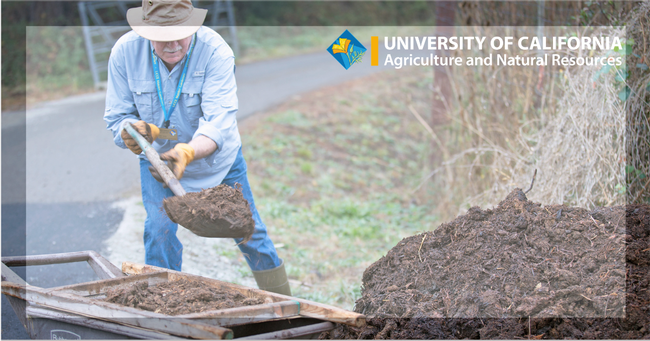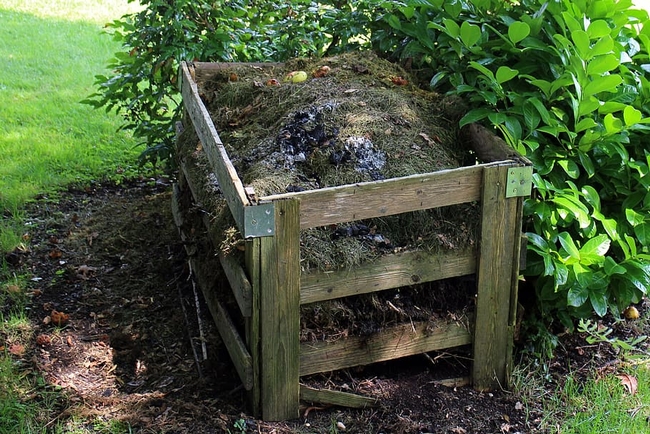
Stanislaus County Library Composting Classes
Tuesday, September 6, 2022 at 6:00 p.m. – Salida Library
Saturday, September 10, 2022 at 2:00 p.m. – Riverbank Library
Monday, September 12, 2022 at 6:00 p.m. – Ceres Library
Tuesday, September 20, 2022 at 6:00 p.m. – Oakdale Library
Monday, September 26, 2022 at 6:15 p.m. – Modesto Library
Wednesday, September 28, 2022 at 6:00 p.m. – Turlock Library
Stanislaus County Agricultural Center, Harvest Hall Composting Class
Tuesday, September 27, 2022 at 6:00 p.m. rooms D&E
Turlock Community Gardens
We taught composting at this location in spring, so this month we are offering vermicomposting, the fun and easy way to compost kitchen scraps using red wiggler worms. Children are welcome!
Saturday, September 17, 2022 at 9:00 a.m.
Patterson Library
We are offering a Fall Vegetable Gardening Class at the Patterson Library, in case you missed this class last month at other locations. Class is Wednesday, September 14, 2022 at 2:00 p.m. Composting will be taught at the Patterson Library on October 12 at 2:00 p.m.
Never miss a class, bookmark our online calendar: https://ucanr.edu/sites/stancountymg/Calendar/
- Author: Denise Godbout-Avant
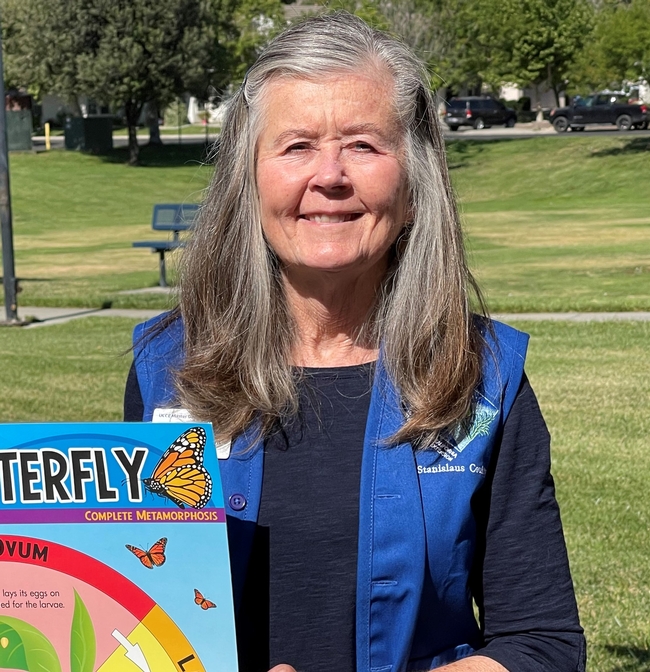
People often rake their leaves and put them out to be picked up as trash. I have always preferred to leave the leaves for my garden.
If you take a walk in a forest, you'll see leaf layers several inches deep around trees and bushes. Fallen leaves have a complex relationship with trees and nature, providing many benefits which can be reproduced to some extent in our gardens.
Natural Mulch
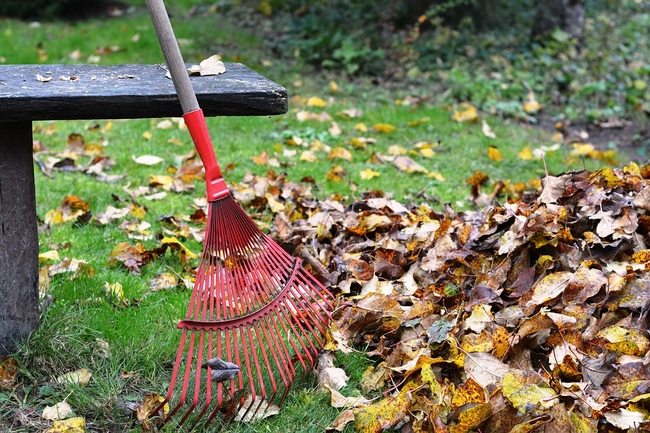
Fallen leaves have the same weed suppression and moisture retention properties of shredded wood mulch—and they're free! Where mulch is desired as a decorative element, what could be more seasonally appropriate than a pile of brightly colored fall leaves? This natural mulch also provides insulating winter cover from cold temperatures for roots, seeds, and bulbs.
A Web of Life in Leaf Litter
Leaf litter isn't just free fertilizer and mulch. It provides food and shelter for a wide variety of living things including spiders, snails, worms, beetles, millipedes, mites, toads, frogs and more—these in turn support mammals, birds, reptiles, and amphibians that rely on these creatures for food.
Detritivores (organisms that eat dead or decaying plants or animals) break up and excrete leaf litter. Fungi and bacteria then take over and complete the recycling process converting these smaller pieces into nutrients which then sustain neighboring plants. They in turn help support biodiversity by becoming food themselves.
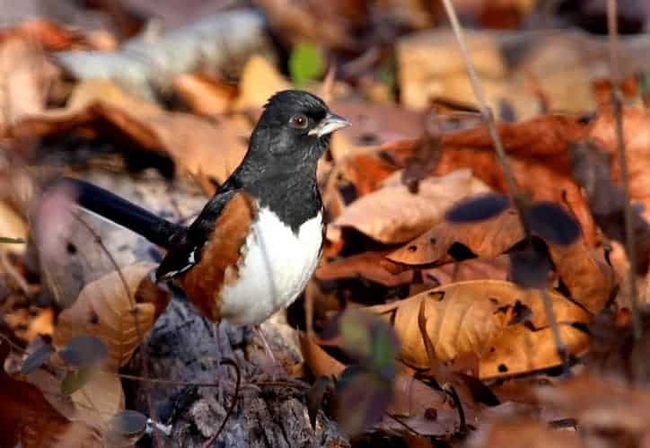
Numerous bird species such as robins and towhees forage in the leaf layer searching for insects and other invertebrates to eat.
Raking up leaves and putting them in the trash could have the unintended consequence of removing some of next year's garden butterflies and moths, many of which are pollinators. Most butterflies and moths overwinter in the landscape as an egg, caterpillar, chrysalis, or adult. In all but the warmest climates, they often use leaf litter for winter cover. Fritillaries and wooly bear caterpillars will tuck themselves into a pile of leaves for protection from cold weather and predators. Some Hairstreaks lay their eggs on fallen oak leaves, which become the first food of the caterpillars when they emerge. Swallowtail butterflies disguise their cocoons and chrysalises as dried leaves, blending in with the “real” leaves.
Bumble bees also rely on leaf litter for protection. At the end of summer, mated queen bumble bees burrow an inch or two into the earth to hibernate for winter. An extra thick layer of leaves is welcome protection from the elements.
All of which makes leaf litter an integral part of a complex web of life.
What You Can Do
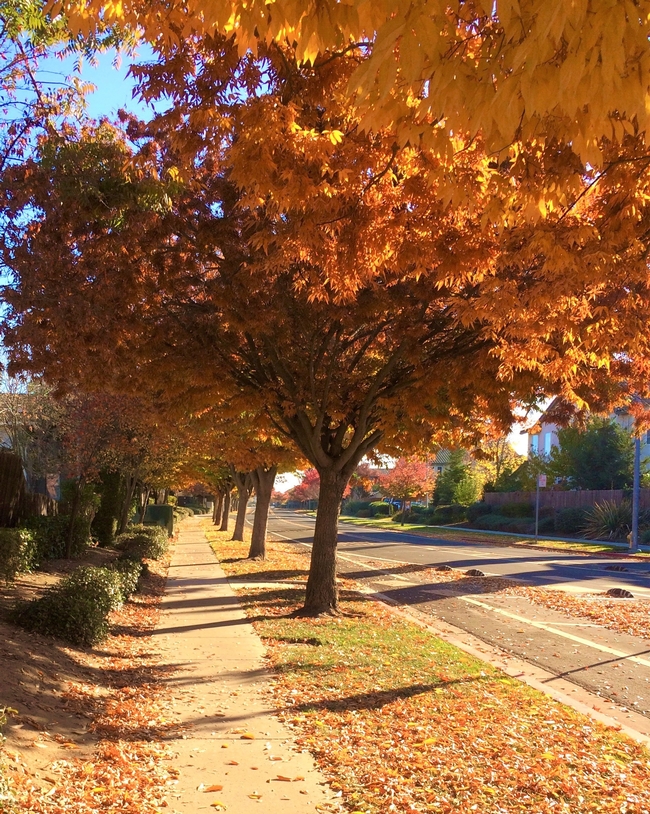
Composting leaves is a terrific way to recycle and create a nutrient-rich garden soil amendment at the same time. Some gardeners opt for shredding their fall leaves for use in compost piles. Like people who mulch their lawn leaves with a mower, consider leaving some leaves undisturbed in garden beds and lawn edges. If space allows, you could create a leaf pile, allowing it to break down naturally, or add the leaves gradually to your compost pile over time. Such efforts will keep leaf litter critters safe and allow you to benefit from the rich garden gift that falls from the trees above.
While it is ideal to “leave the leaves” permanently—for the benefits mentioned above—if you do decide you need to clean your garden and remove the leaves in spring, try to wait until later in the season, so as to give the critters that have been protected by fallen leaves over the winter time to emerge and depart.
Some gardeners may be concerned that autumn leaves, matted down by rain or snow, could have a negative impact on their perennials. However, a thick layer of leaves provides additional insulation against chilly weather and protects newly planted perennials from frost which could damage tender roots and shoots. Anyone who has spotted fragile spring seedlings popping up in the woods knows that all but the most fragile of plants will erupt through the leaf litter in spring without trouble.
So, leave the leaves. While you can't perfectly emulate a forest, your garden will be healthier and more diversified, you'll help support a vast array of wildlife, and you'll reduce the strain on landfills.
Denise Godbout-Avant has been a UCCE Stanislaus County Master Gardener since July 2020.
- Author: Anne E Schellman
If you've ever felt confused by the process of composting, you are not alone! Most gardeners experience confusion at some point over the following topics:
What can I compost?
- Kitchen: fruit and vegetable scraps, tea bags, coffee grounds, and eggshells.
- Yard waste: grass clippings (except Bermudagrass), leaves, pine needles, and shredded wood chips.
- Rotted manures from non-meat-eating animals are allowed, but not necessary.
What shouldn't I compost?
- Avoid animal products (meat, bones, fish, grease, dairy).
- Ashes from the fireplace or BBQ (can cause pH imbalance in soil).
- Sawdust from treated wood.
- Dirt: this ends up making it heavy and too hard to turn.
- Avoid diseased plants.
- Most weeds.
What are “greens” and “browns” and why does it matter?
Greens are rich with nitrogen, and browns contain carbon. Don't get bogged down by reading about the ratios of how much of each to use. Bottom line? You need to add equal amounts of greens and browns. The easiest way to do this is by using two 5-gallon buckets.
Greens examples
Vegetable & fruit scraps, grass clippings, coffee grounds, and rotted manures.
Browns examples
Dry leaves, straw, sawdust, wood chips, corn stalks, cardboard, and paper.
Composting Tips
Make sure all items added to the pile are chopped or shredded to at least 1 ½” in size. Otherwise they won't break down equally. The best size for a pile is 3x3 to 3x5.
For more information including what compost system to choose, which compost method to use, how often to turn your pile, pests, troubleshooting, and a general demystification of the composting process, watch our Composting Basics presentation! You can download the handout on our Classes and Workshops page. https://ucanr.edu/sites/stancountymg/Classes/
- Author: Ed Perry
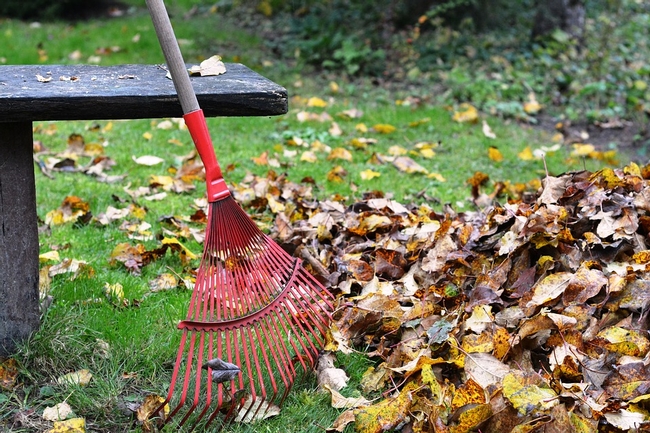
If you're interested in making your own compost, the perfect time to start is in fall. A light covering of leaves on the surface of your lawn can simply be shredded with your lawn mower and left in place. They will decompose rapidly and add valuable nitrogen and organic matter to the soil. Once the leaf layer becomes too thick, you must begin raking them up for your compost pile.
Some gardeners simply pile the leaves in one place and allow the composting process to proceed slowly. However, if you want finished compost quickly, you'll want to use the “rapid” or “hot” composting method. Rapid or hot compost is made by manipulating the decay process, which is done by balancing food, water and air in the compost pile to favor the growth of high temperature microorganisms. A byproduct of their activity is heat.
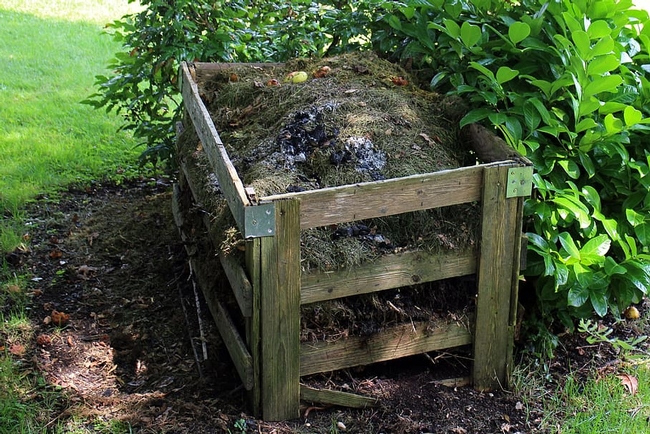
To construct a hot compost pile, you will need a combination of bulking materials and energy materials. Bulking materials, sometimes called “brown materials,” are dry, porous resources such as sawdust, wood chips or straw. They help aerate the compost pile but are too low in moisture and nutrients to decay quickly on their own.
Energy materials, sometimes called “green materials,” include grass clippings, fresh animal manures, fruit and vegetable waste and garden trimmings. These materials provide the nitrogen and carbon compounds needed for fast microbial growth. If piled without bulking materials, energy materials are too wet and dense to allow adequate air into the compost pile. Such materials may emit a rotten egg smell as they decompose.
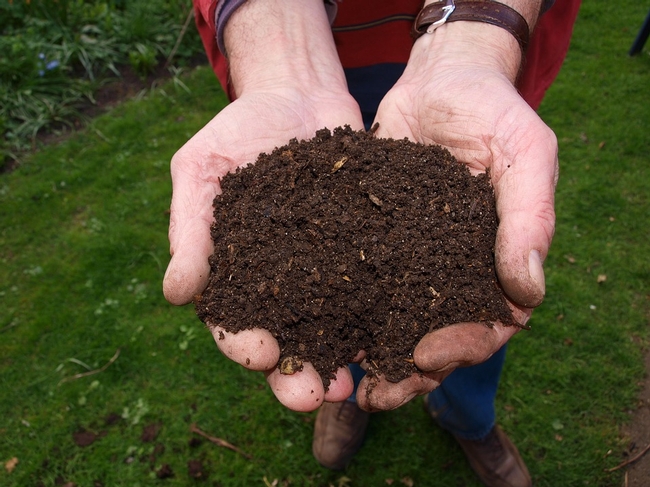
To build a rapid compost pile, combine two parts by volume bulking materials with one part energy materials. Some other hints for a rapid compost pile include:
- Chop your raw materials into small pieces. For best rapid composting, the particles should be from 1/8 to 1/2 inch in diameter.
- Mix the types of raw materials, rather than layering them.
- A large pile holds heat better than a small pile; for rapid composting, make the initial pile at least a cubic yard (36” X 36” X 36”) in volume.
- Keep the pile moist, but not wet.
- Turn the pile once a week to aerate it.
The raw materials that you use in composting have their own microorganisms. There is no need to add starters or soil. If the rapid process is working properly, you can have ready to use compost in as short a time as 3 weeks. Even if it doesn't work that fast, you will still eventually have a valuable compost that you can use to enrich your garden soil.
Still have questions about composting?
Sign up for our Composting Basics class!
When: November 24, 2020 6-7:30 p.m. PST.
Where: on Zoom.
How: http://ucanr.edu/compost/2020 sign up by Nov 24 at 4 p.m. to receive a link sent the morning of the class.
Instructors: Master Gardeners Terry Pellegrini and Heidi Aufdermaur.
And remember, all classes are recorded so you can always watch it again later.
Hope to see you there!
Ed Perry is the emeritus Environmental Horticultural Advisor for University of California Cooperative Extension (UCCE) in Stanislaus County where he worked for over 30 years.
- Author: Terry Pellegrini

Composting is a fabulous way to turn your garden waste into garden gold. By taking your dry waste and combining it with your green waste, you can transform it into a rich, usable material to enhance your soil. You can also use it as a mulch around plant beds to reduce weeds and fill your containers and pots without the cost of store-bought soils.
Not only is composting good for your garden, but it is also good for the environment. By composting your garden (and some kitchen) wastes you are conserving precious landfill space, reducing the need for commercial soil conditioners and fertilizers, as well as adding beneficial microbes and nutrients back into the soil. Compost, either added to the soil or used as a mulch, saves on water usage as well.
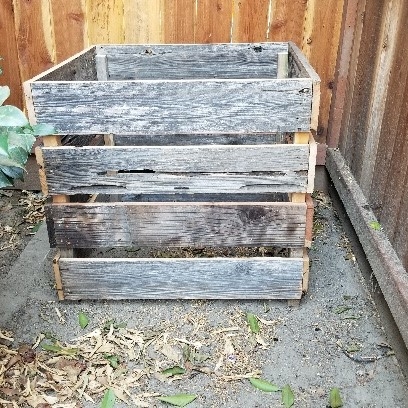
Turn your compost every day or two (for rapid composting), or once per week. Check to make sure it isn't too wet or too dry (it should feel about as moist as a wrung out sponge) and protect it from the weather (a tarp or covering to keep out intense heat or rain) and in no time you'll have rich, usable compost.
Composting is a science but still, things can go wrong. The number one complaint I've heard from friends is, “My compost always turns out stinky and I give up.” Stinky compost is a sign of an imbalance in your pile. A healthy compost pile should smell earthy and not look wet and slimy. Trust me, stinky compost is a real turn-off. I should know – it's happened to me on occasion. Checking your moisture levels, adding in additional brown materials if needed, and making sure to turn your pile will help with this issue.
Don't let composting scare you. It can be a fun and rewarding way to give back to the environment, save money and water, and enhance your landscape. With a little bit of work, a pile of waste becomes the garden gold we all desire. Still have questions about composting?
Sign up for our Composting Basics class!
When: November 24, 2020 6-7:30 p.m. PST.
Where: on Zoom.
How: http://ucanr.edu/compost/2020 sign up by Nov 24 at 4 p.m. to receive a link sent the morning of the class.
Instructors: Master Gardeners Terry Pellegrini and Heidi Aufdermaur.
And remember, all classes are recorded so you can always watch it again later.
Hope to see you there!

